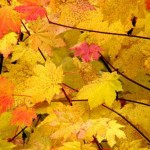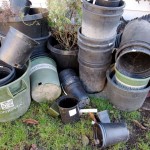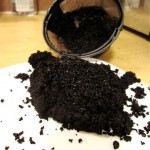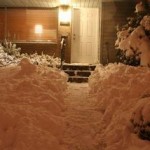How to renovate a lawn
January 26, 2009 @ 8:11 am
At Ecoyards, we get lots of calls from customers who need help renovating their lawns. Their grass may be thinned in some areas, diseased in others. Sometimes, it’s so overrun by dandelions and weeds (more than 50 percent) that it’s just better to start from scratch. A healthy new lawn drains properly, and discourages moss. It also requires less maintenance, water and fertilizers over time.
Once we decide that your lawn needs renovation, here’s what Ecoyards does:
1. Remove the sod. We remove the old turf and haul it away for composting. Some people recommend killing grass by spraying it with herbicide. We don’t do this, as we try to avoid herbicides where possible.
2. Improve the soil. Healthy soil is the key to healthy lawns. Grass grows taller and thicker, and competes better with weeds. We’ll mix in mature compost, abundant in nutrients and microorganisms, with your old soil about six inches deep, so you’ll have a good thick layer of rich topsoil.
3. We roll out sod that uses mostly a blend of ryegrass, which is very well-suited for western Washington. Voila. Instant lawn.
4. Once the sod is in place, water it enough over the first few months to maintain healthy conditions. Once it’s established, water deeply every week, so you get about one inch of water. Water it in the early morning, preferably before 10 a.m. to reduce the amount of evaporation.
5. Fertilize the lawn about 30 days after we install it, using a slow-release organic fertilizer which releases nutrients gradually into the soil and reduces the amount that runs off into our streams, rivers and Sound. Use fertilizers moderately. Look for the words “natural organic” or “slow release.” Please avoid weed and feed products, which broadcasts weed killer on every inch of your yard. That excess runs off into the waters, harming salmon and other fish.
Filed under Seattle Lawn Care Permalink · No Comments »
 When it comes to picking plants for our landscape or for yours, we prefer to go native whenever possible. Trees, shrubs and other plants native to the Northwest — vine maples (right), sword fern, salal, beach strawberry, and Pacific dogwood — simply do better in our climate. In addition to requiring little maintenance, birds and other wildlife in our area have come to rely on these plants over decades and centuries to supply them with food, shelter and other needs.
When it comes to picking plants for our landscape or for yours, we prefer to go native whenever possible. Trees, shrubs and other plants native to the Northwest — vine maples (right), sword fern, salal, beach strawberry, and Pacific dogwood — simply do better in our climate. In addition to requiring little maintenance, birds and other wildlife in our area have come to rely on these plants over decades and centuries to supply them with food, shelter and other needs.








